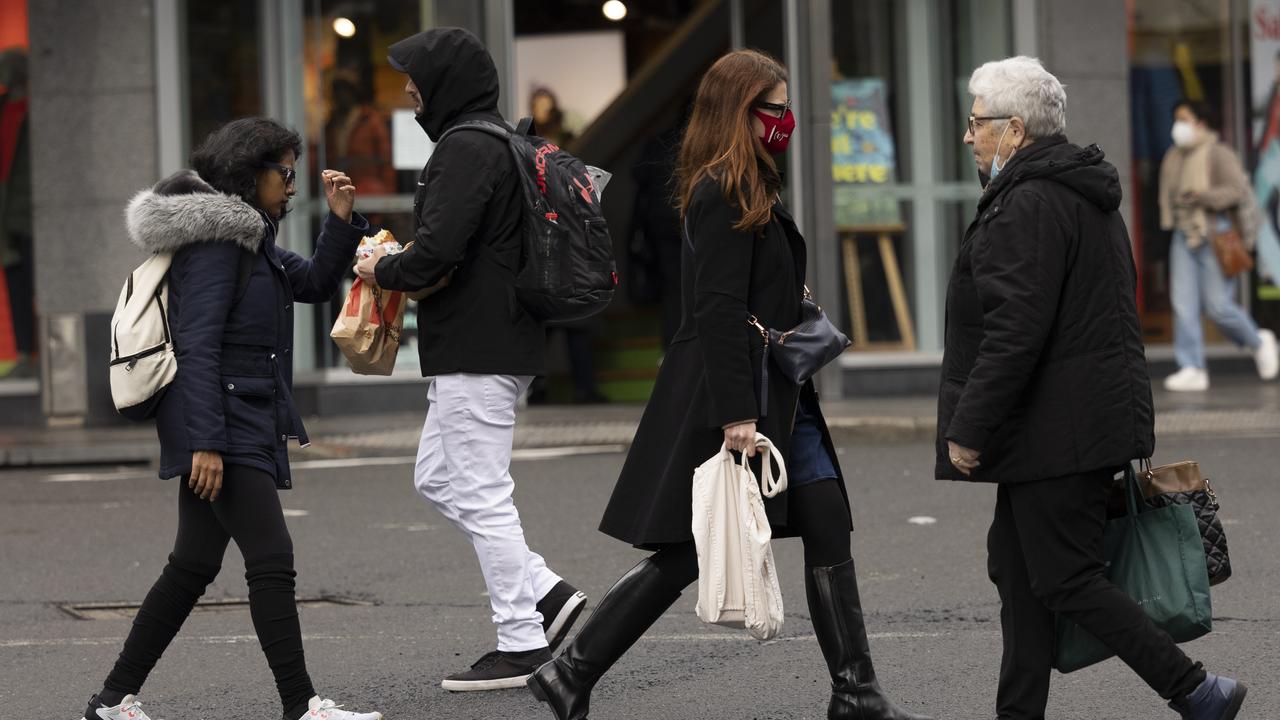Sydney Covid-19 outbreak features significant infection rates among family members
NSW has introduced a lockdown in parts of Sydney as alarming infection rates among certain groups show just how infectious the virus is.
Sydney’s Covid-19 outbreak has highlighted how incredibly infectious the Delta variant is with authorities warning that close to 100 per cent of household members were expected to get the virus.
NSW Premier Gladys Berejiklian announced on Friday the introduction of stay-at-home orders for four local government areas in Sydney, after 22 new cases were discovered.
She said authorities were concerned there would be more cases in coming days, namely from household contacts.
“Previously you may have had one or two other members of a household getting the virus,” Ms Berejiklian said.
“But because this is a contagious strain we anticipate that close to 100 per cent of everybody in a household is likely to get the virus if one person has had positive test results.”
Twenty-four of around 30 people who attended a birthday party in West Hoxton have also tested positive to Covid-19.
“You can see the incredible attack rate we’ve had at that party,” NSW chief health officer Dr Kerry Chant told reporters.
Deakin University epidemiologist Professor Catherine Bennett said the large number of cases among the West Hoxton party looked like they may also be linked to household spread.
“It sounds like it was a family party with people of all ages and who were indoors together for quite a while,” she said.
It’s possible not all of the people got infected at the party, and some of those who did may have passed the virus on to other household members who also attended the party but were not initially infected.
RELATED: The map that explains Sydney’s lockdown rules

Prof Bennett said it would be interesting to find out whether those who had not tested positive had been vaccinated.
“Fingers crossed it may be a good news story about how vaccination can work,” she said.
She said some UK studies had shown the chance of household transmission dropped by about 40 to 50 per cent among those who were vaccinated.
Workers who are face-to-face with a number of clients during the day have also been transmitting the virus.
One of the more concerning clusters in the state is centred around the Joh Bailey hair salon in Double Bay, where at least three staff members worked while infectious, and two clients have already tested positive.
University of NSW Professor Mary-Louise McLaws, who is an adviser to the World Health Organisation, said rising numbers of cases in households was to be expected and was not as concerning as infection among friends or work colleagues, because these other groups would be more likely to be out in the community.
Household contacts are more likely to get the virus anyway, and also to be isolating.
Prof McLaws said the information provided by NSW Health did not make it clear whether “close contacts” or “linked cases” were household members of positive cases.
NSW authorities say they will provide details of whether cases had already been isolating when they tested positive, starting tomorrow.
Authorities have also pointed to people becoming infected through “fleeting contact” and experts believe this is a reflection of the airborne nature of the virus.
In one Sydney case the moment of transmission was caught on CCTV, when a man in his 50s passed an infected limousine driver at Myer in Bondi Junction.
The driver is also thought to have infected a woman in her 70s sitting outside Belle Cafe in Vaucluse.
RELATED: Confusing lockdown rules slammed

In explaining what had changed overnight to prompt authorities to introduce the lockdown orders, Dr Chant pointed to the growing exposure list, confirmed transmission at some of those settings, and the 17 new cases identified since 8pm on Thursday night.
Prof Bennett believes the NSW decision to issue stay-at-home orders for four local government areas is a “really clever way” to do lockdown.
In particular she said the decision to include people who worked in those areas was essentially treating the four LGAs as exposure sites.
“It’s better than saying everyone has to go into lockdown and put police cordons up, which do not work because people will push out (of those areas),” she said.
She said the rules would stop people moving around who may be infected, and protect those who may be exposed through their work from getting infected.
“It’s the right step to take now as there isn’t an argument for a full lockdown because they seem to have a good understanding of the virus,” Prof Bennett said.
“But it's a good way to suppress transmission risk even further.”
Prof Bennett said authorities did not seem to be in front of the virus yet but did appear to be on top of it.
She said it was “exceptional” that the only unlinked case up until 8pm last night was an eight-year-old child.
“I think that’s amazing given the incidental spread with the index case (a limousine driver) who was clearly very infectious when he was out and about.”
She said authorities will also be able to ease restrictions earlier if there are no cases among people who haven’t already been isolating and there were not more missing link cases.
“It also means that a number of people who either work or live in the affected areas won’t get exposed to the virus and won’t need to go into at least 14 days of quarantine,” she said.
“These eight days now reduce the chance of a full 14-day quarantine, and that chance is real if you are living or working in those areas.”
charis.chang@news.com.au | @charischang2




